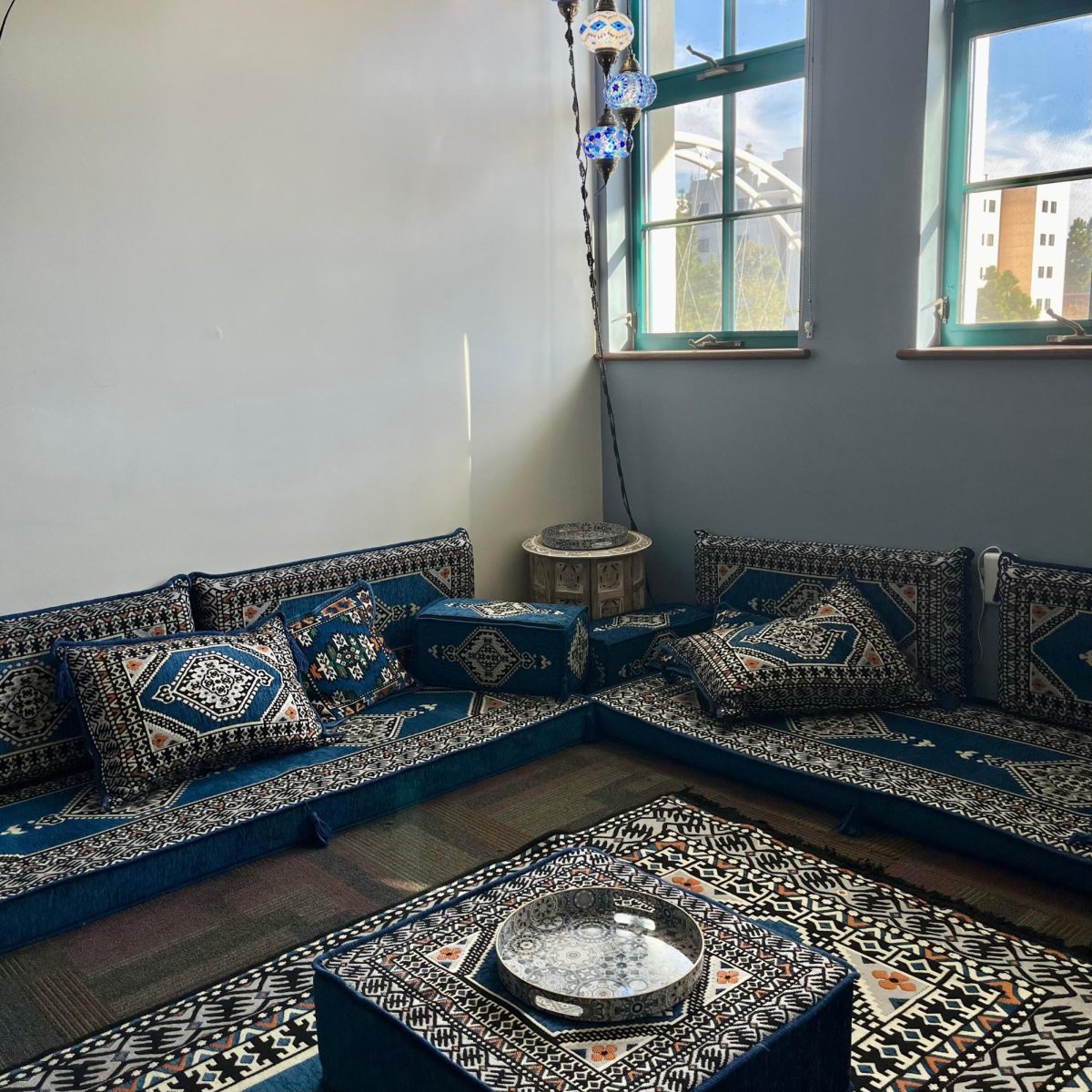Located on the second floor of the student union, the Center for International Relations has been open for over 20 years and has become a staple for students on campus. The CIR serves a diverse student body and works to support minoritized students, alongside multicultural issues. In return, it has become a space heavily utilized by the Middle Eastern/Southwest Asian and North African student community. After years of advocacy by its student workers, in May 2024, the CIR opened a lounge to explicitly represent Middle Eastern/Southwest Asian and North African cultures, countries and ethnicities.
The MENA lounge was created to offer a space where students from these communities can unite, share solidarity and feel represented. Its name was given after a survey revealed that students had a stronger connection to the acronym: MENA, as SWANA is less common.
Such a space was necessary during times of heightened tensions, specifically the Palestinian genocide, as many MENA/SWANA students felt unseen and unsupported on campus post Oct. 7. The journey toward the lounge’s creation wasn’t easy, but it was powered by the collective efforts and perseverance of students advocating for a space that truly reflected their needs during such a difficult time.
Jasmin Zeis-Khalil, who worked at the CIR, helped push for and facilitate the space. She described it as a slow and gradual process, but after years of persistence, she and her peers were able to secure the necessary funding to bring their vision to life.
Creating the space took a total of eight months, beginning in September of 2023. This eight-month commitment to developing the space illustrates the immense effort and intentionality poured into every detail. As Zeis-Khalil explains, it was crucial that the lounge highlighted smaller MENA/SWANA creators by ordering as many things from Etsy as possible.
The oud and Tatriz were prominent pieces from Etsy. The Tatriz is a centuries-old traditional form of embroidery in Palestine that is only learned through generations. The symbolic motifs are the heart of the Tatriz as they represent various facets of Palestinian life and culture. It is a testament of resilience and plays a special role in the Palestinian diaspora, a means to preserve their ancient culture.

The oud is a prominent instrument in medieval and modern Islamic music and is said to be the descendant of the medieval Persian instrument, barbat. The oud has been around for over a thousand years and has been mentioned in Arabic and Persian text as far as the 1st century AD. The oud has made its way in contemporary music, from Lebanese musician, Rabih Abou-Khalil, and rock band, Led Zeppelin.
Music is a huge part of MENA/SWANA culture as it has become a powerful form of liberation.

Several of the pieces came directly from Morocco as well!
During the lounge’s soft opening, students shared testimonials about their experience as part of the community alongside a cultural display where they contributed cultural pieces. Zeis-Khalil tells me the goal was to ensure every student had shared a piece of themself. In part of this mission, students made individual tiles that were later pieced together into a larger mosaic, allowing everyone to leave their mark in the lounge.

Those behind the creation of the lounge, as Zeis-Khalil explained, were also determined to make it a space of education where all students could come together to learn and engage in open dialogue.
Professor Jarmakani’s book was included, highlighting professors on campus who specialize in the community. Professor Jarmankani teaches Women’s Studies at SDSU and is part of the Center for Islamic and Arabic Studies faculty, specializing in “Arab American Studies; Orientalist representations in the Americas: Arab feminisms; gender, war, and militarism and the Middle East.” The space featured other books from prominent MENA/SWANA authors such as Mahmoud Darwish, Hala Aylan, Khalil Gibran and Latifa al-Zayaat. Zeis-Khalil emphasized the importance of curating a diverse collection of books, from classic authors to contemporary voices telling the more modernized stories of the diaspora.
There was also a cookbook, allowing students to learn traditional cultural dishes from the region!

Despite Zeis-Khalil’s efforts to spread the word, the MENA lounge has hardly received the recognition it deserves. She says, “You would think the school would put more of an emphasis on promoting the space when it was completed.”
Students often have to seek out the space or rely on someone in the community to tell them about it. Amidst this challenge, I noticed several students using the space to do homework and socialize with friends which demonstrated the strong sense of community. Students are already making great use of the space, and it is only waiting to be discovered by more who would appreciate it but simply aren’t aware yet.
So, come visit! The MENA lounge is located on the second floor of the Student Union in the CIR, room 250F. It’s open to all students Monday through Thursday from 9 a.m. to 6 p.m, and Fridays from 9 a.m. to 4 p.m. during the academic year.






